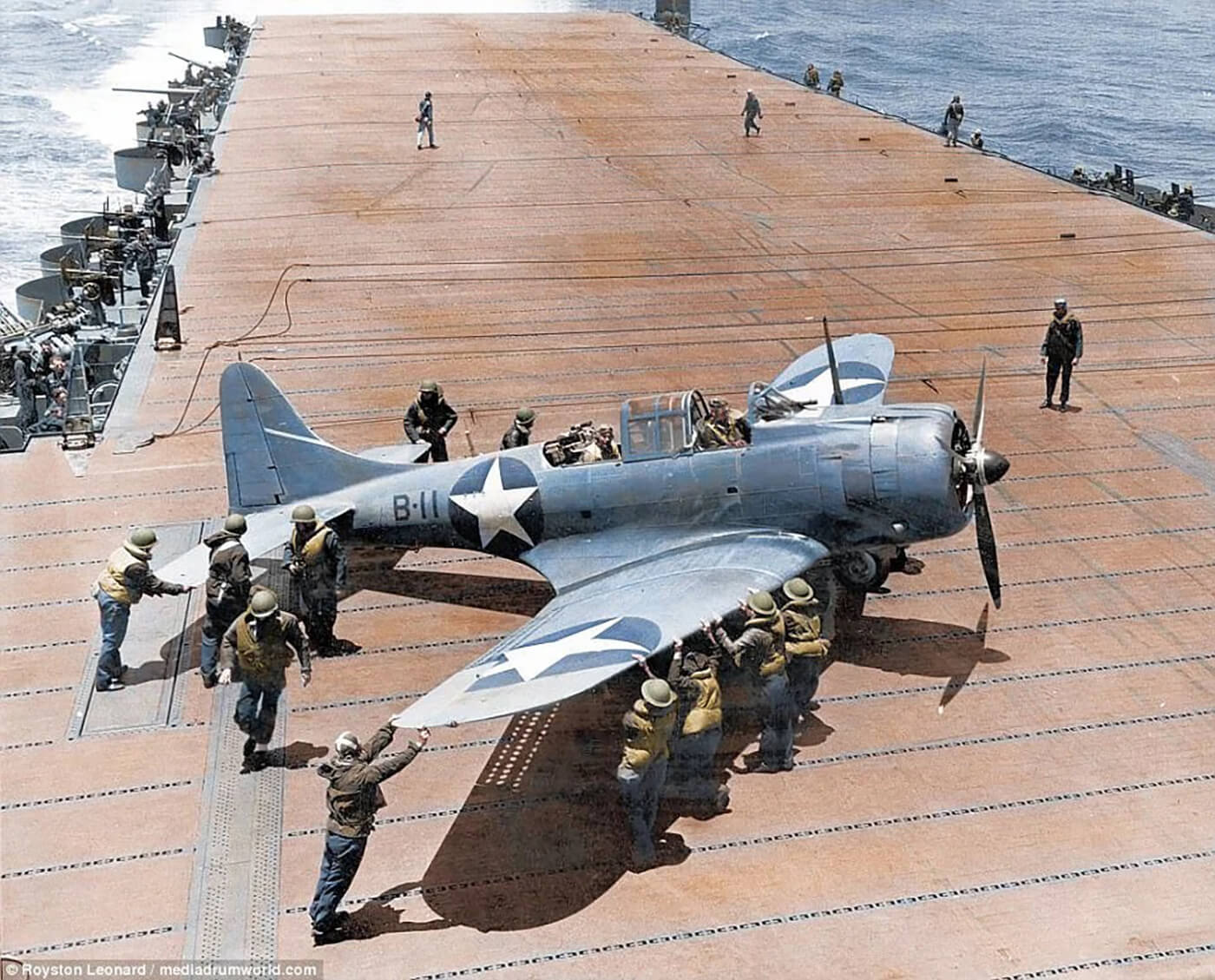| 1942 |
1942 was the year the war shifted.
The year starts with the signing of the Declaration of the United Nations by twenty-six countries.
On the January 11th, the Japanse declare war on The Netherlands and invade Borneo and Celebes, Part of the Dutch East Indies, from the Philippines. In February, the Japanese invade Sumatra, starting with a paratrooper attack on the oil fields of Palembang. During the last days of February, an Inter Allied fleet, trying to stop the Japanese invasion fleet, is almost completely destroyed by the Japanese fleet during the battle of the Java Sea. Aircraft carrier the U.S.S. Langley is lost a few days later. In the beginning of March, the Japanese land on Java. Four days later they enter the capital Batavia. On March 8th they capture Soerabaja. One day later the Dutch capitulate.
In February, the Japanese also start landing on New Guinee. By July, the Japanese have beaten the Australian and Dutch and are in control of the country.
The Philippines are overrun by the Japanese forcing General Mac Arthur to flee the country to Australia. Here he announces, “I came through and I shall return.” In the beginning of April Japanese troops start their last all-out assault on the U.S. and Filipino troops on the Bataan Peninsula.
In Burma Commonwealth troops are forced on retreat repeatedly under heavy Japanese pressure. By the end of February, the Japanese have reached Rangoon.
In North Africa Rommel launches an assault from Libia end January. By the end of the following month the Commonwealth troops are forced to evacuate Benghazi. The 8th army retreats and regroups around the Gazala–Bir Hakeim line. At the end of May and the beginning of June the British and Free French are able to slow the Axis advance. Here both sides receive for reinforcements and prepare for the upcoming battle. End May Rommel takes the initiative again and launches an assault on the Allied positions. By the end of June, he takes Tobruk, capturing 33,000 Commonwealth troops and massive supplies. With these supplies and captured equipment, he keeps pursuing the Allied. This pursue ends at the defensive position of El Alamein in July. The tired troops are no longer able to take initiative and take defensive positions. By the end of October, the 8th Army starts an offensive and wins the second battle of El Alamein. In the beginning of November Operation Torch takes place. U.S. and Commonwealth troops land on three places of the coast of French Nort Africa. This turns the tide in North Africa. The British break out and halfway November the capture Tobruk, Derna and Benghazi.
The battle for Malaya continues during the first month of 1942. Ending on January 31st with the retreat of the Commonwealth troops to Singapore. In the beginning of February, the Japanese attack the fortress Singapore, defeating the commonwealth troops and with-it capturing Singapore on February 15th. During the whole Malayan Campaign, the Commonwealth troops loose 130,000 troops killed or captured.
In May the battle of the Coral Sea takes place. This first aircraft carrier battle in history ends in a more or less status quo with both sides losing one aircraft carrier and having another one damaged. It is the prelude for the battle of Midway that takes place between June 4th and June 7th. This battle proofs a turning point in the Pacific region. In the three-day carrier battle the Japanese lose all four fleet carriers of the 1st carrier striking fleet. The U.S. loses only one fleet carrier. In Midway the Japanese lose their air superiority in the Pacific.
On the Eastern Front the Germans and Rumanians launch an assault at the Kerch Peninsula. They destroy the Soviet bridgehead and Crimean Front. The overpowering firepower inflicts massive losses on the Soviet front. At the end of the five-month battle, in May, the Soviets have lost 570,000 troops. The Axis 38,000. That same month a little to the North the Soviets try to retake Kharkov. The battle ends after a six-day encirclement of the attacking Soviet army. The Soviet loose 280,000 casualties compared to just 20,000 for the Axis.
By the end of June, German Army Group South launches an offensive to capture Stalingrad and the Baku oil fields. While the 11th Army takes Sevastepol. They reach Stalingrad by the end of August which is the start for the famous battle of Stalingrad. On November 19th, the Soviets start a counterattack at Stalingrad. The Soviets sacrifice massive amounts of troops but in the end, they can turn the tide. Halfway November the Soviets under command of Zhukov have surrounded the German 6th Army under General von Paulus and trap them within Stalingrad. In December, the Germans try to relieve the encircled army but fail to reach the army of von Paulus.
In August, the Allied launch their first big land assault in the Pacific, with the landings at Guadalcanal. Both U.S. and Japanese take massive losses during the following months accumulating during battle of Tenaru, end August, and the battles of the Matanikau and Henderson Field ending in October. By the end of December, the U.S. soldiers start attacking the Japanese position at the mountains near the Matanikau River. Another bloody battle evolves. Also, on sea the two parties take heavy losses, losing and wining sea battles.
In August, the raid on Dieppe takes place. The Allied and especially the Canadians participating take an enormous loss. Unintendedly the Allied learn valuable lessons for the upcoming invasion plans for Europe.

